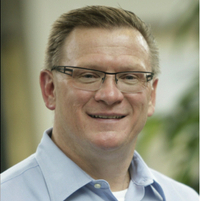Which type of safety advisor are you?

Today’s business environment demands agility from safety professionals to be successful. It’s agility that allows for the proper and effective response to change and turns adversities into opportunities.
Historically, the role of the safety advisor was to “police” the workplace and drive compliance to the legislation and the company policy. Gone are the days where the “safety cop” is the safety professional’s main role in our modern workplaces. In fact, safety advisors that bring just this antiquated thinking and approach often find themselves disconnected and disempowered by the exact system they are supposed to be serving. The role must evolve beyond simple compliance.
Today, the business unit management team owns compliance and the role of the safety advisor has broadened to include being a consultant, consensus-builder, advocate, tutor, coach and mentor. There is a wide range of competencies and skills needed by a safety advisor to succeed in today’s workplace, and it is fair to say the role of the safety advisor is growing. The skills needed for success today include hard skills such as knowledge of engineering, physics, math and chemistry. The skill set for success also includes soft skills such as communication, leadership, general business acumen and a technical understanding of your company’s core business. Important behaviours include customer service, problem-solving, needs analysis and risk communication.
Safety advisers use their knowledge and skills to promote a positive culture and best practices in health, safety and environmental management in the workplace. Their job is to support the operations team that is responsible for ensuring the employer and all employees comply with safety legislation and that the management system (policies and practices) established to provide the framework for compliance are adopted and adhered to. They need to bring a transformational leadership style to work with them every day and be able to adjust this style and, indeed, their communication style to every circumstance.
The question is, how should safety advisors position themselves to maximize their impact and therefore maximize their value to the company? We know that simply driving compliance will not do. We also know that the role of the safety advisor has broadened significantly. The range of approaches a safety professional can take in his advisory work can be characterized as one of the policeman, the politician, the technician, the challenger and the consensus-builder. Depending on the circumstance, each of these approaches may be more effective than others.
The policeman is the deeply self-confident safety advisor, often from the “old school” or with too many years of working experience in a single industry. They follow instinct that the years on the job have taught them. They know the letter of the legislation and they may be described as the “enforcer” who does things “by the book,” believing safety is a discipline distinct from operational excellence.
The politician has a bias towards telling people what they want to hear. They are usually good communicators, liked by most and are considered to be highly reliable. Their focus is on the people aspects of safety and listening to employees’ concerns. They may struggle with the bigger issues and prefer to talk about issues rather than take corrective action.
The technician is exactly as the title sounds: they know the science of safety and speak to the technical correctness of how thing should be done. They are hardworking, often putting their “nose to the grindstone.” They are typically well-educated, self-motivated and don’t give up easily. They are the safety advisor that will fight long and hard for what they think is technically correct.
The challenger may best be described as the debater in the safety department. They have a deep and thorough understanding of the technical aspects of the company’s business and the safety system and they are not afraid to challenge the business unit leaders and teach them something new about how things could be run. They are not afraid of controversy and can often be quite assertive (although diplomatic) about pushing new ways of thinking about old problems.
The consensus-builder thrives on nurturing and fostering relationships and is an advocate for safety at every level of the organization. They “speak many languages” and can relate equally well with the front-line labourers as with the senior management team. They willingly give their time to those that ask for it. Their primary posture to the employee group they serve is “accessibility” and “first-class” service. Consensus-builders may be seen as the master communicators in the organization.
While many safety advisors have the capacity to modify their approach, most default to a single one. There is not one best role for the safety advisor to take. The variety of circumstances a safety advisor may face would call for a variety of roles. It is recognized the role may need to be adjusted for any given situation and appropriate adaptation may garner the greatest success. It can be generalized that the consensus-builder and challenger profiles may be best suited to the direction that the safety profession is evolving, however, as the world becomes increasing technical, some support from the technician may be highly beneficial. There may be times during some types of risk communication where the politician may be best but, increasingly, it is becoming evident that the role of the policeman needs to be limited to crisis-type situations when a command-and-control leadership style may be needed.
Ideally, the safety professional is multi-skilled and highly adaptive with the capacity to modify her thinking and behavioural preferences to suit any circumstances. Situational leadership is very much the order of the day. When the safety team is knowledgeable about safety, regularly talks about safety with the operations team and engages in matters related to safety to build consensus, they increase the likelihood that safety will indeed succeed. The safety professional must take a leadership role in supporting the operations team to own and drive the safety activities such that safety becomes a habit. In the absence of this tutoring, coaching and mentoring role, safety becomes a “nice to have.” Occupational health and safety risk management only works when it becomes a habit. We need to make safety a habit.






